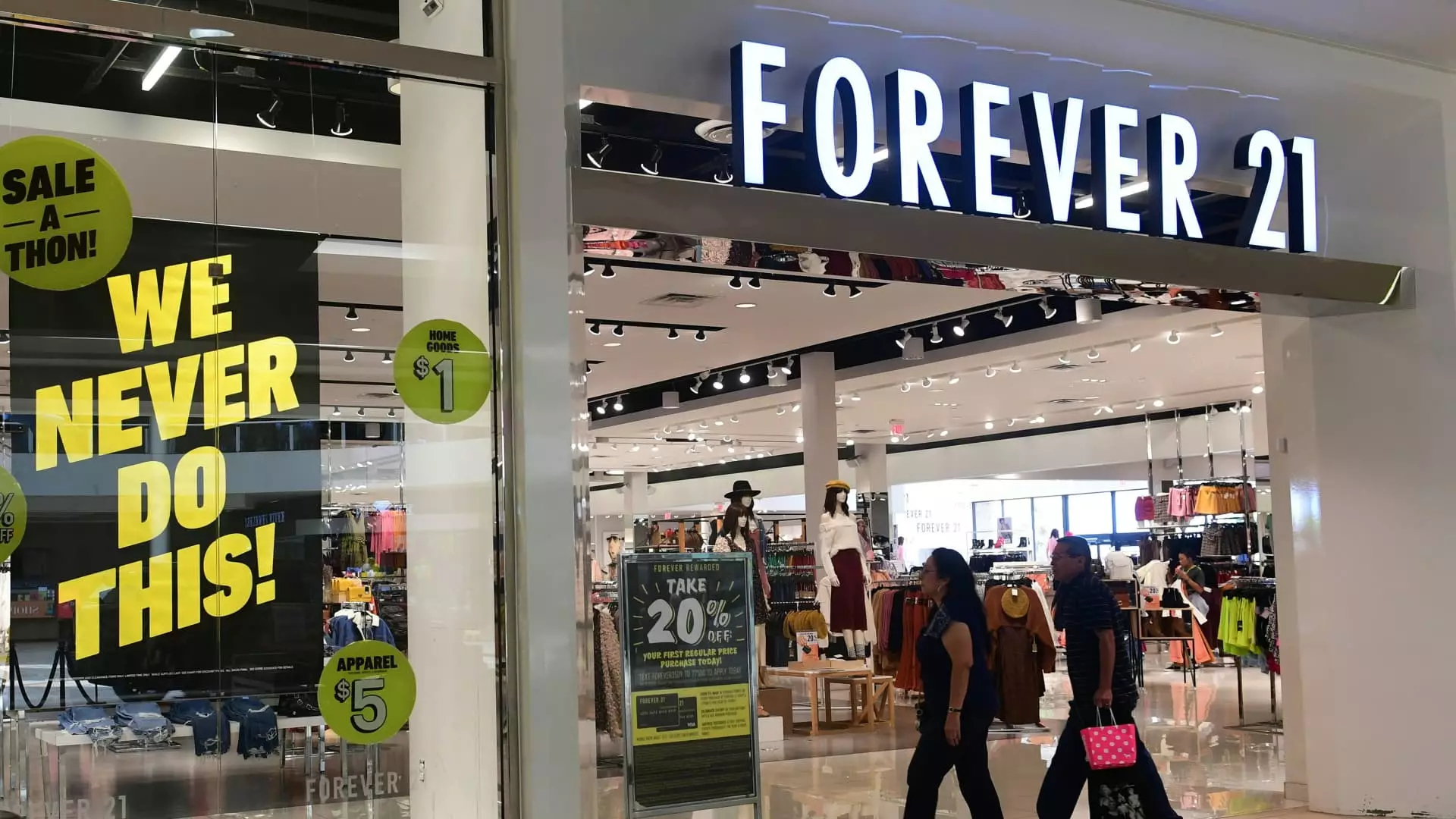In the ever-accelerating world of fast fashion, few brands have experienced as tumultuous a journey as Forever 21. Once a giant in the industry, the retailer is currently navigating through significant challenges that have prompted discussions about potential liquidation and a second bankruptcy filing. As representatives for the company quietly explore their options with liquidators and buyers, a deeper look into what has led to these struggles reveals underlying issues within the brand and its positioning in a rapidly changing marketplace.
Reports indicate that Forever 21 has been in discussions with liquidators, underscoring the severity of its financial situation. The company requires immediate measures to salvage its U.S. operations, leading it to consider selling assets and leases. As they analyze the feasibility of a second bankruptcy, it’s clear that the brand’s financial foundation has severely eroded since its previous Chapter 11 filing in 2019. Despite a temporary restructuring, it appears that lasting improvement has been elusive.
The move to engage liquidators suggests that the company is preparing for the possibility of failing to attract a viable buyer. By utilizing proceeds from liquidation to settle debts, Forever 21 can navigate its descent while attempting to preserve as much brand value as possible. However, this tactic may merely serve as a stopgap rather than a sustainable solution.
Forever 21’s struggles reside mainly in its U.S. operations, where swathes of competition have reshaped consumer preferences. Chinese e-commerce platforms like Shein and Temu have emerged as formidable rivals, utilizing advanced technology and a data-driven approach to capture the market’s attention. Unlike traditional retailers shackled by overhead costs such as physical storefronts, these e-tailers can adapt more swiftly to trends, offering a level of agility that Forever 21 struggles to emulate.
Compounding the issue is Forever 21’s diminishing “cool factor.” Once a trendsetter, the brand has lost ground, failing to resonate with youthful consumers entrenched in today’s evolving fashion landscape, which has catered to personalization and sustainability. With an unparalleled degree of consumer choice available, the challenge is not merely one of competition; it’s a fight to reclaim relevance.
Forever 21 has not only faced market pressures but has also undergone ownership transformations that complicate its situation. With Authentic Brands Group holding the retailer’s intellectual property, the company’s brand name and associated attributes are under a different operational model since the first bankruptcy filing. A potential sale of the brand itself may be hampered by the existing ownership structure, which raises questions about the degree of interest from prospective buyers.
Additionally, the partnership with Shein—aimed at revitalizing Forever 21—has yielded mixed results. Initially perceived as a strategic alliance, it has become evident that the collaboration falls short of expectations, leaving both parties to reevaluate their roles. While Shein’s technological prowess and data acumen have fortified its market position, Forever 21’s adaptation to this partnership has appeared more of a struggle than a symbiotic relationship.
The turbulence experienced by Forever 21 reflects broader trends within the retail landscape. As established players grapple with changing dynamics, the rise of nimble, exclusively online brands has fostered uncertainty about the future of physical retail. The fast fashion sector, once rife with opportunities, is now marred by elevated competition, evolving consumer behaviors, and macroeconomic pressures, including rising tariffs.
As consumers increasingly gravitate toward brands that resonate with values of sustainability and community engagement, traditional models centered around rapid turnover and mass production may need a complete overhaul. For Forever 21, the path forward necessitates innovative thinking—an evolution from merely a fast-fashion retailer to perhaps a more holistic and adaptive brand offering.
The current plight of Forever 21 serves as a cautionary tale, illustrating how quickly fortunes can change in the fast-paced world of retail. Dissecting its recent decisions and broader industry movements reveals the multitude of factors at play. While the whispers of liquidation and bankruptcy loom, the potential for rebirth exists—albeit requiring bold reconceptualization. Whether through reimagined partnerships, reinvention of brand identity, or strategic mergers and acquisitions, the future of Forever 21 may lie in navigating the complexities of today’s market while learning from the missteps of the past.

